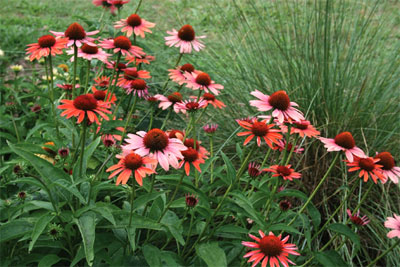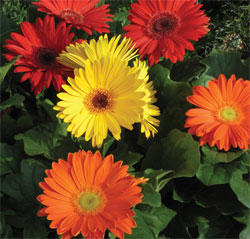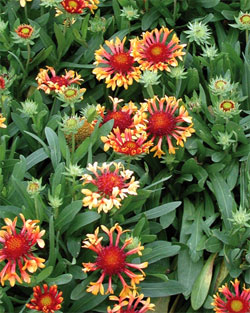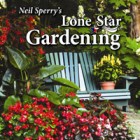From the Magazine

Familiar coneflowers, Echinaceas, are a staple in summer gardens. This one is ‘Big Sky™ Sunset’.
Extraordinary Daisies
Modern-day choices are plentiful and beautiful
Gardeners and non-gardeners alike recognize daisies. They have the single most popular and diverse form of flower and contain the largest family of plants. In the language of flowers, daisies convey innocence, purity and cheer. They have charmed me since childhood, when I picked my first tiny bouquets to hand to my mother.
The flowers consist of many petals (ray florets) surrounding a central disc. The color combinations, shapes and spacing of the ray florets and the ways they are borne on the stems contribute to the almost endless variation of flowers. Many of these daisies make excellent cut flowers. They also attract butterflies and bees, adding to their garden significance.
SPRING
Most of us are familiar with the traditional white Shasta daisy (Leucanthemum), but there are many types of daisies that add interest to the garden in spring and early summer:

Gerbera daisies are among the most brilliant of the daisies that love spring and early summer.
Gerbera Daisy (Gerbera hybrid) — Brightly colored, the original Gerbera daisy has developed over the years into a compact, free-flowering plant with large blooms. The color range includes red, orange, yellow, pink, white and variations of them all. Plant them in morning sun areas with well-drained soil or in containers. The Drakensberg series exhibits more sun- and heat-tolerance, but the flowers are not as vibrant in color nor as numerous.
African Daisy (Osteospermum) — This native of South Africa has unique blooms. My favorites are the purple and lavender varieties with spoon-shaped petals. Equally stunning is the Symphony series, including vibrant orange or yellow petals surrounding a purple central cone. African daisies are cool-season plants and bloom well in early spring while the night temperatures are low. They are excellent for filling the gap between pansies and hot summer color.
Gazania Daisy (Gazania) — A compact annual growing 8 to 10 inches tall, Gazania daisy displays boldly colored flowers. Showy striped or solid blooms close each evening and open again as the sun rises. Many varieties have attractive gray-green foliage. Available in nurseries during spring months, the plants perform best before the heat of summer.

Gaillardia ‘Fanfare’ is one of the new varieties of spring-loving blanket flowers and a favorite of the author.
Blanket Flower (Gaillardia) — Often seen as a wildflower along Texas highways, blanket flowers come in cultivated versions that offer larger flowers and a more compact growth habit. There are many new varieties on the market with a range of red, orange or yellow flowers. One of my favorites is Gaillardia ‘Fanfare’, because its performance in my garden has been quite good. The petals are tubular and flare at the tips, giving them an eye-catching spoon-shaped appearance.
SUMMER
Add a few daisy-like flowers to the garden mix for mid- to late summer. These perennials show off during the heat in sunny locations:
Purple Coneflower (Echinacea purpurea) — New introductions of coneflower are continually being developed in unusual colors, but my favorite is Echinacea ‘Big Sky™ Sunset’. The stems are strong, and the plants produce an abundance of long-lasting, glowing orange flowers. I find that occasional deadheading prolongs the flowering season.
Helen’s Flower (Helenium ‘Mardi Gras’) is festive during the hottest part of summer, when many plants are exhausted from the heat. It is mounding and covered with orange and yellow daisy-shaped tie-dyed flowers.
Black-eyed Susan (Rudbeckia ‘Viette’s Little Suzy’) — In my opinion, every garden in Texas should include some type of black-eyed Susan. August is the toughest month for gardening in the heat, and these golden flowers add much-needed color during this time. ‘Little Suzy’ is bred for its compact stature and large flowers.
FALL
Liven your fall garden up with these two late-blooming perennials:
‘Country Girl’ Mum (Dendranthemum) — An heirloom mum, also known as ‘Sheffield Pink’, grows easily to 2 feet tall and spreads nicely. The 3-inch flowers are enormous compared to the usual fall garden mum. They are pink with a yellow center, and the abundance of flowers is breathtaking. Dig and divide the plants as needed to share with friends.
Fall Aster (Aster oblongifolia) — A fall garden is not complete without this beautiful native aster. The flowers are bright blue-lavender, and the mass of color each plant displays makes quite a show. Fall aster multiplies readily and can be divided when needed. It is sun loving and heat- and drought-tolerant.
What a delightful group of plants the daisy family contains. The diversity provides us plenty of choice, making it easy to select hardy and attractive daisy-style plants for the garden throughout the year.
About the author: Sharon Lee Smith is co-owner of Blue Moon Gardens, a retail nursery and garden center in Chandler (www.bluemoongardens.com).

